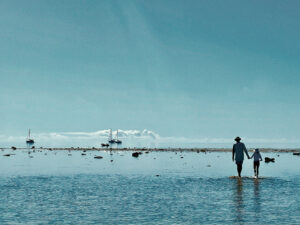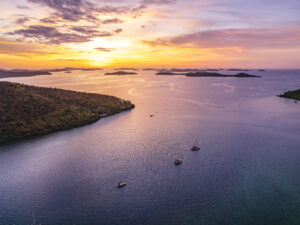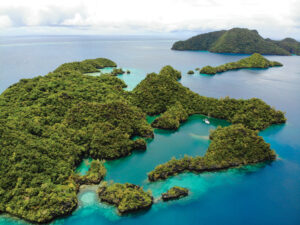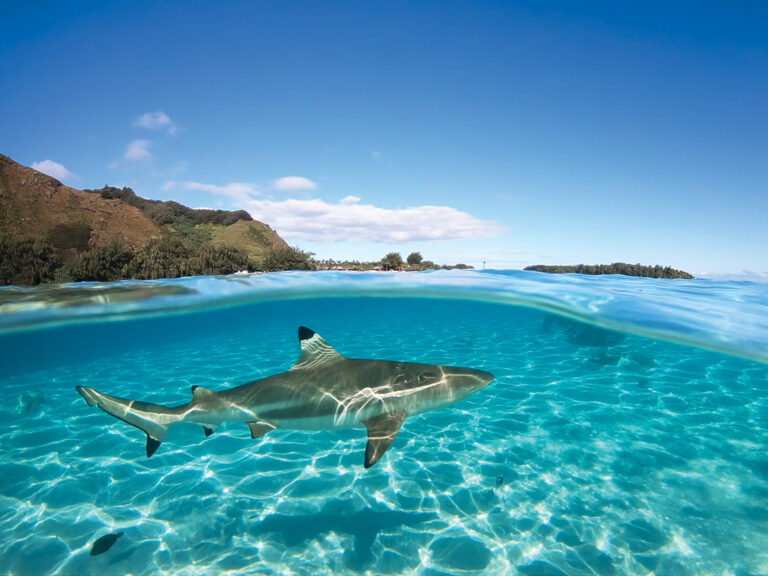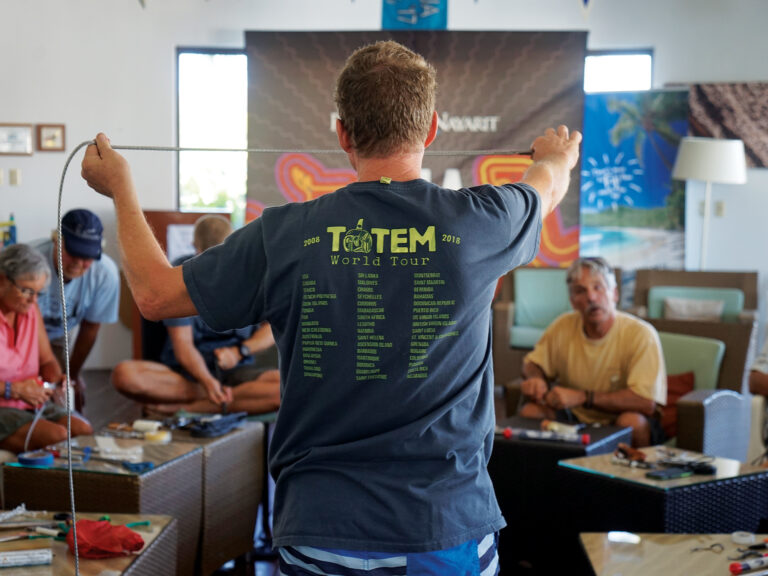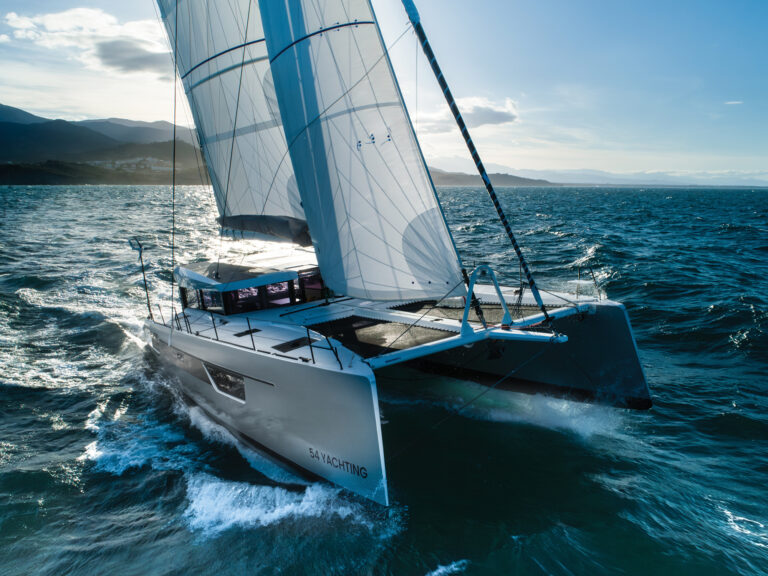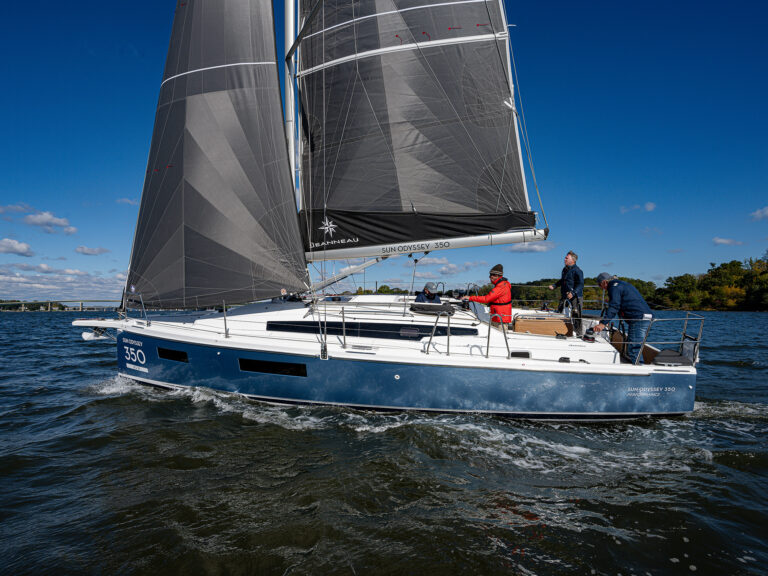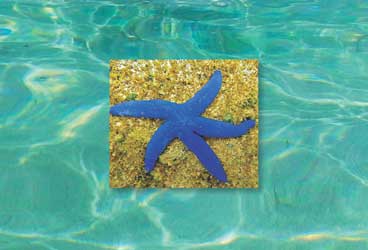
Tonga Story
It was still fairly dark, though already hot, when I brushed off the sheet and sat up in the cabin wondering which I’d heard first: the roosters, dogs, or squealing pigs? Then again, perhaps it was the sweet refrain of tenors accompanied by booming bass voices, soaring altos, and dizzying sopranos that got the critters and me going. Whatever. It was one hell of a racket coming from shore at the uncivilized hour of 0430—the start of another day in Tonga (see the photo gallery here).
Choir rehearsal is taken very seriously in this island kingdom, which lies a thousand or so nautical miles northeast of New Zealand and about half that distance to the east of Fiji. And though I’d read of the hymns and been advised to attend church if the opportunity arose, I was still unprepared for the early hour and great diligence with which the Tongans practice their faith. Payday, of course, comes every Sunday, when the churches—Mormon, Wesleyan, Catholic, and Tongan— in each village swell with women dressed in their ankle-length black dresses and men in their traditional tupenus, or black wrap-around skirts; both wear the traditional ta’valas and kafas, intricately woven mats and rope belts.
On a late-January Saturday, six of us New Englanders had stepped into the heavenly heat and humidity that consumes Tonga, meeting up at Fua’amotu International Airport in Nuku’alofa, on Tongatapu, a facility that’s not really as grand as its name might suggest. Still, it’s efficient in quickly processing visitors. We’d fretted over what we took to be strict requirements for immunization records—and wondered if we’d brought too much wine from the New Zealand duty-free shops at the Auckland airport—but we breezed through customs with nary an eyebrow raised and were greeted afterward by Vinnie ’O Fa, who offered up a hearty “Malo lelei!,” Tongan for hello. Vinnie’s sister, Pina, runs the family-owned Keleti International Resort, our accommodations for the next two nights.
Tongatapu, Tonga’s largest island, is at the kingdom’s extreme southern end. Meanwhile, the base shared by Sunsail and The Moorings is in Neiafu, on Vava’u, which is the biggest island in the far northern group of the same name. In between lie 170 islands scattered across 130 nautical miles of the Pacific, and for those arriving on a Saturday, there isn’t a prayer’s chance in hell of crossing any of it because the entire country shuts down on Sunday.
Actually, that’s not entirely true. After services at the Sa Paula Wesleyan Church, which my wife, Sue, our friend Paula, and I attended at Pina’s invitation (yes, the chorus was divine), we learned that on Tongatapu, at least, you can procure just about anything if you drive to the rear of a roadside Chinese market. There, through a closed metal grate, goods are readily available. Sunday afternoon is also the time families flock to the sea with picnic baskets brimming with food. All around us, Tongans chatted away in the shade or on the beach, many enjoying a cold Maka, the “Friendly Islands Lager” that we’d all grow quite fond of.
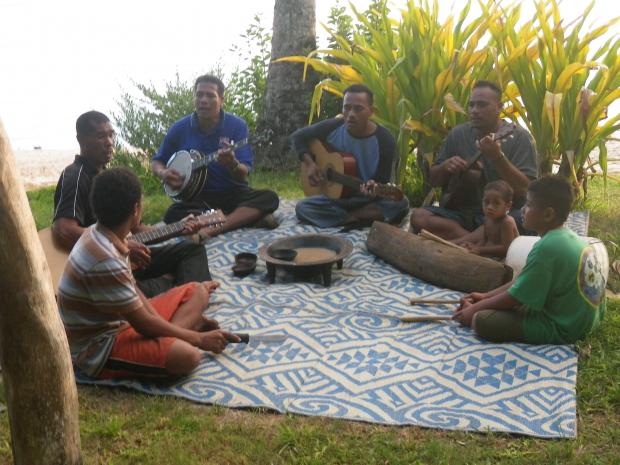
Though “resort” might be a stretch for the concrete-block bungalows where we stayed, the rooms and food more than suited our needs. On the beach, we snorkeled and swam in calm water inside the volcanic rim that lies just offshore. On the incoming tide, the Pacific swell strikes the rocks, sending waterspouts shooting skyward like Las Vegas fountains and spume cascading down the outcroppings like icing on a cake. During the winter, we were told, the whales come to Tonga, and they can often be seen breaching not far from shore. Locals keep a keen watch for them, as well as for the Japanese whaling ships that must be chased away.
By Sunday afternoon, a buzz had spread through the resort: Cyclone Wilma, a powerful ocean storm, was bearing down on Tonga’s northern flanks, and it was forecast, of course, to arrive in Vava’u at about the same time we were.
So, not knowing what we’d find by day’s end, we were up early Monday morning, bound for our Chathams Pacific flight north. By now, we’d noted that Tongans are big people, both in heart and stature, so it was with some wonder that we watched a group of them board the 20-seat plane, where you had to bend at the waist and shuffle your way down the aisle. The preflight duties of the co-pilot included making his way aft to hand out seatbelt extenders to the largest aboard.
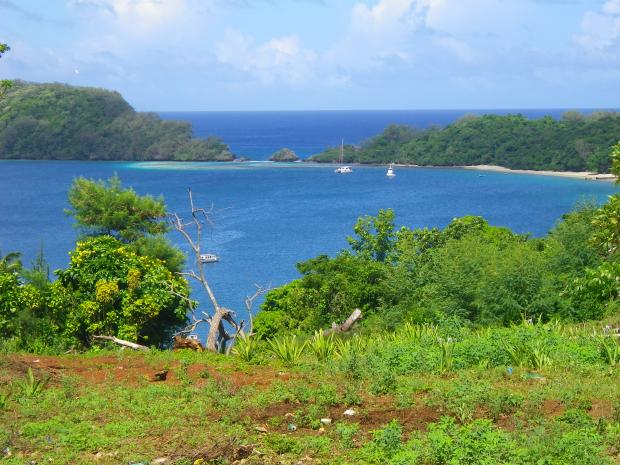
The flight north gave us our first real glimpse of what lay ahead. Puffy white clouds dotted the deep blue sky, and below we watched waves break on reefs stretching between lush green islands. Even from a few thousand feet up, it was easy to see the changes in water color that would be our aids to navigation once we were under way.
In Neiafu, Sunsail’s Kerris Adlam met us at the airport with a van. Though she was all smiles, I could see that “storm’s-a-coming” look in her eye that any U.S. East Coast sailor knows well from our own hurricane seasons. At the charter base and all along the waterfront in Neiafu, workers stowed awnings, screwed plywood over windows, and towed docks to deeper water. There’d be no sailing for us this day. Instead, Kerris advised us to hurry to the market and buy enough supplies to last for at least 48 hours. Meanwhile, she found us rooms where we could weather the blow.
Shopping in Neiafu—the only real town in the Vava’u group—is an adventure. On this Monday, all the shops seemingly closed early as the town prepared for Wilma’s overnight arrival. Still, we enjoyed the walk from the base to the Vava’u Shopping Center, a small store overflowing with canned goods, frozen meats, and fish. We bought ingredients for one-pot meals in case all the restaurants closed (or were blown away), then headed for the waterfront produce market to buy enough veggies to sustain us until we could board our boat—by Tuesday, we hoped.
We holed up at the Vava’u Harbour View, a small resort of white plywood cabins near the end of the harbor. We found a nearby path to the water, spent the afternoon swimming, then enjoyed an ex-pats cyclone party at a pizza shop a short taxi ride away. James was our driver that evening, and he became our go-to guy for any wheelwork while in Vava’u. Like other Tongans, he’d left the islands for several years, in his case to make money in an Australian mining town. James owned 13 acres of land and had amassed 17 cows for his mother’s future funeral feast. They’d buried his father under the dining room table some years ago so he could remain present for family meals.
Near dawn on Tuesday, heavy rain woke us, but Wilma had other plans and passed well to the west of the island group, bringing little, if any, related wind our way. In the cyclone’s wake, however, strong northerlies filled in, lacing the harbor with whitecaps. Since nearly every islander had been given a “storm day”—and had no intention of returning to work—we’d spend another night ashore.
Our departure, finally, came midday Wednesday. Kerris had already briefed us on what to expect. Sailing in Tonga, she said, is very straightforward.
Because surveys were suspect, no cartography card was included with the GPS plotter aboard our boat, a Sunsail 384 catamaran named Folau (the Tongan word for sailing). Instead, we should use the plotter solely for our speed and lat/long and rely on our two paper charts—confusingly, one with depths in fathoms, the other with soundings in meters—and keep our eyes open. Wide.
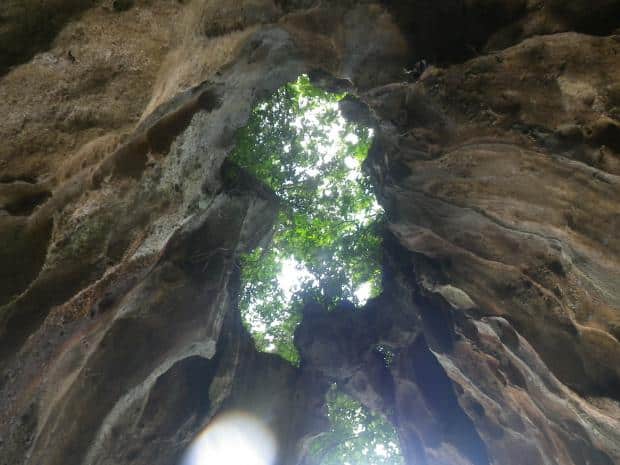
The waters around Vava’u are generally deep, except where they’re not. So relax if the water’s blue, pay attention if it shades to green, and if you find yourself surrounded by brown spots and see coral heads, well, you’ve probably gone to far.
Because of the depths, Sunsail recommends relying on the charted anchorages, most of which lie in around 30 feet of water. During the high winter season, when the trades are easterly to southeasterly, most offer fine protection. However, in summer, when we visited, the easterlies often back to the north, making many of these spots untenable, so we picked our stops with care, especially along the reefs.
One more note on charts: Throughout the Vava’u cruising guide, anchorages are marked with numbers. Though this is useful for the tongue-tied visitor stymied by so many vowels in the place names, I found it a little unsettling that even the islanders referred to their home waters in this way. They might recommend visiting Number 20, snorkeling at Number 7, and attending the feasts at Number 11.
Leaving Neiafu’s Port of Refuge, we sailed south on a still-brisk northerly breeze. Islands to either side kept us jibing as we tooled along at 6 knots and better. Then, as we reached the point where the channel widens, we looked back to see black clouds coming our way, bringing whitecaps that more than hinted at a good squall. We dropped sails, and with the engines running, rounded the northern tip of Kapa island and grabbed a mooring at deserted Port Mourelle, where the first European visitor, Spaniard Don Francisco Antonio Mourelle, dropped anchor in 1781 to take on water.
With the tropical sun again blazing, we dove in to swim and snorkel. Coral heads the size of tables covered the bottom, and brilliantly colored schools of fish darted about. We shared the bay that night with just one other boat. Ashore, there wasn’t a light to be seen, and we began in earnest our search for the Southern Cross.
Thursday, we were up early for the morning weather net on VHF Channel 26, then on our way. After a quick snorkel along the sandy beach at the southern end of Kapa, we hoisted sail and pointed the bows north on a near reach bound for the western side of Vava’u, where perpendicular cliffs soar 500 feet above the ocean. In the open waters, a tremendous groundswell sent breakers crashing on the rocks. From there, we bore off and headed first west, then south along the long and rocky coast of Hunga, Tonga’s westernmost island. We surfed down swells as we searched for the pass into the island’s central lagoon.
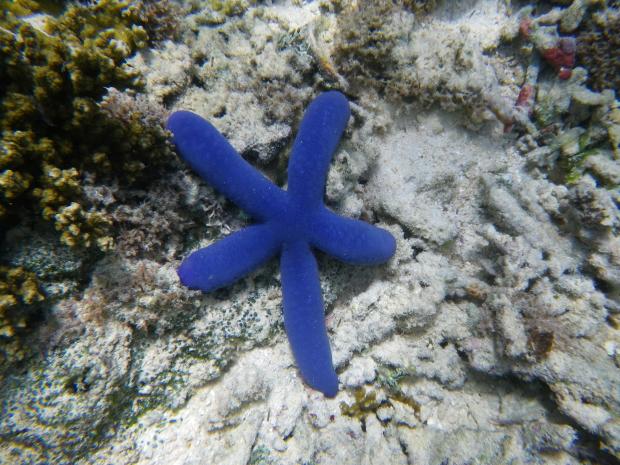
We nearly missed it, but at the last minute made out the 150-foot-wide opening, marked by a 10-foot-high rock roughly 50 feet from a cliff to the north.
Leaving it to port, as Peggy read from the cruising guide, we surged our way forward under power, hunting in vain for two small floats that supposedly marked a shallow reef. Later, I appreciated that in those tense couple of minutes, she’d neglected to recite the line about never entering with a running sea; by the time she did, we were already in the calm, 100-foot-deep basin.
Apparently, we’d found the channel.
That night, we grabbed a mooring off the closed-for-renovations Ika Lahi Game Fishing Lodge. From there, we had a spectacular view of the The Road.
The Road ascends skyward from the village wharf on the eastern shore of the lagoon. Its concrete roadbed, sidewalks, curbs, and waist-high, dome-capped walls glowed in the late afternoon sun. From our mooring, we guessed it ran 400 or more yards straight up the steep embankment to the village beyond; we couldn’t see it, but we figured it must be impressive given the feat of engineering leading to it. The next morning, when Sue, Dave, and I dinghied ashore to inspect this monument to foreign aid, we were told by the crew of a large, metal workboat that there was an impending funeral for a deceased islander they’d just brought home from the mainland. They encouraged us to visit the village nonetheless.
It was a steep climb. Dave spotted the portable cement mixer that had obviously been used to pour the concrete, making the job seem even more impressive. Soon we were at the summit, where two women dressed in black stood braiding a belt, presumably for someone to wear at the upcoming ceremony. Across from them rested the village’s one car, a minivan, which had to back either up or down The Road because no one had thought to build a wide-enough turnaround at the bottom.
Atop the hill, The Road ended abruptly, and we stepped off into red mud of an amazing consistency. Curious children watched as we strolled a short distance into the village, past a wooden church and homes that had neither windows nor electricity. The few adults we saw were dressed formally, and before circling back, we heard singing from another church that was just out of sight. Once again atop The Road, looking out over the lush green land, the lagoon’s glowing aqua, and the white spume of waves breaking against the Pacific’s deep blue backdrop, Hunga seemed as good a final destination as any, and if we were afforded the opportunity to choose, better than most.
Late morning, we took the inflatable to visit and explore the white-sand beaches between Hunga and Foeata. We beached the boat, donned our masks and snorkels, and set out across the extensive coral reefs for what would be the trip’s best snorkeling. In three to 15 feet of clear water, we wandered down coral paths. Fish and colors sparkled everywhere. Back on the beach, the breathtaking palette of blues reflected off the reef-strewn shallows and were totally mesmerizing.
We waited until high tide to depart, then hoisted sail once more. Soon our reach became a beat into a gusty northeaster. We tacked often but made slow progress against wind and current, so eventually we motorsailed into the lee of Matamaka, where we found a neatly kept beach and village.
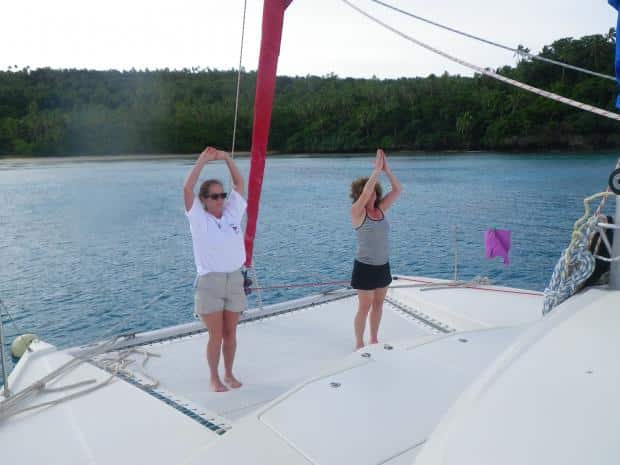
Ashore, flower gardens decorated the backyards of freshly painted houses. We walked along a sandy path between them and came across two youngsters who couldn’t wait to have their picture taken. Soon, their mother arrived and shyly showed us her tapas, traditional Tongan paintings drawn on rough paper made from mulberry. We agreed to meet her the next morning to see her collection, and also to take several pairs of reading glasses ashore to leave at the church. We’d brought them on the advice of sailing friends who said the glasses were greatly appreciated by the aging carvers and weavers who make their livelihoods with their sight and hands.
That evening, we watched a seriously listing fishing boat approach the stone pier, where 25 or so passengers, mostly children, disembarked. Later, a local fisherman named Ben pulled his boat alongside with his wife and two small kids. She told us how the children leave each week to attend school in Neiafu and return on Friday. In Tonga, where even electricity is a rare commodity, a great value is placed on education.
It’s another Tongan irony that fishermen such as Ben can easily fill their boats with fish each day but return to an island where few have enough money to buy them. Instead, the food is shared, as is the bounty of produce, so all seem to live well, if not “richly.”
On Saturday, we sailed to the large reef west of Euakafa, a wedge-shaped island that rises to a plateau some 270 feet above the water. Kerris had predicted it would be a reliable landmark when all the small islands to the south of Vava’u began to look similar. And it was.
When snorkeling here, you swim along coral that lies at most 10 feet below until you come to the edge of the reef; suddenly, the bottom drops into deep, blue emptiness. When I first swam over this lip, I thought I might eat my snorkel.
For the evening, Sunsail had contacted its few off-season charterers to try to come up with the minimum dozen required for a feast. The company was successful, so we spent the afternoon sailing north to an anchorage at the southern tip of Pangaimotu, an island connected to Vava’u by bridge and road. At the Ark Gallery (www.tongavavauholiday.net/ArkGalleryOfVavau.htm), a floating houseboat and shop, we met Sheri Roberts and Larry Schneider, cruisers who left Oregon in 1981 aboard their 1918 Norwegian-built Moli. These days, Sheri paints and runs the gallery, and Larry maintains a dozen storm moorings as well as various boats that have been left in his care for the off-season. Increasingly, Tonga’s relatively protected harbors are becoming a popular alternative to sailing south to New Zealand for cyclone season.
Ashore, with the evening sun still quite hot, Maka and Leslie Latavao arranged the low-slung table for the feast. But first, we were encouraged to visit the local artisans who’d spread blankets on the grass to exhibit their baskets, woodcarvings, tapas, and other handicrafts. The work was magnificent, and several of us readily parted with our Tongan pa’anga in order to take pieces home.
Next came the native dancers, organized by Kuina Fatai, whose relatives play in the string band that accompanies them. Throughout the evening, the musicians drank kava as they harmonized and strummed away. The school year in Tonga had just begun, and Kuina said the young dancers would use the tips they earned that evening for books and supplies. A former professional dancer himself, Kuina said his troupe is part of a movement that’s trying to preserve traditional ways as youngsters become increasingly exposed to life elsewhere.
The feast itself was, well, a feast. Covering the table were banana leaves; under them lay seafood, chicken, and pork, all cooked that afternoon on hot rocks in a fire pit, or emu. The preparations began when the fire was lit at 11 a.m.; dinner was served as the sun set eight hours later. After, as we all returned to our various boats, the dancers, cooks, and musicians took up where we’d left off. I doubt that any food on that overloaded table was wasted.
Sunday was our last day on Folau. We were off early in search of more reefs but found that most of those along our route were inaccessible in the northeast wind. All morning we’d been visited by orange versions of what we’d call yellow jackets. It was near noon when Peggy, resting her hand on the cabin top, was stung on her ring finger. Within minutes her finger swelled considerably, and she lost feeling in it. It was then that we considered that, especially on the day of rest, medical care in Tonga might be difficult to procure. When Benadryl proved ineffective, the ever-creative acting ship’s surgeon, Dave, used a set of nail clippers and a Leatherman to cut off his wife’s gold wedding ring and another that she wore. The patient and doctor recovered with cold Makas.
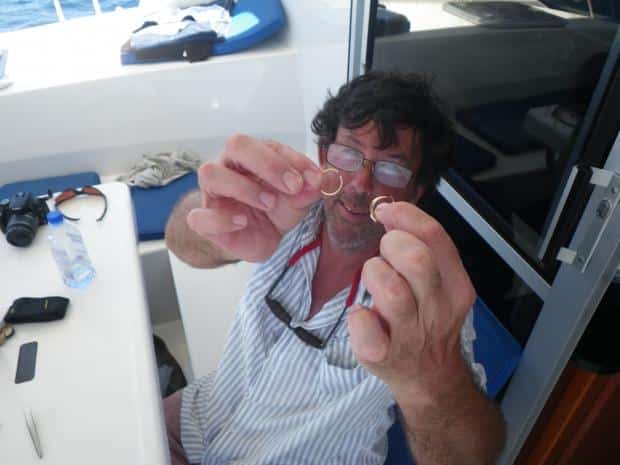
With the clock ticking, we sailed north, partly retracing our steps, to explore a recommended snorkeling site off Luamoko island. We cruised by Mariner’s Cave, where a good swimmer can dive down and pop up inside via the underwater entrance. On this afternoon, though, with the strong groundswell still running, it wasn’t to be. Instead, we returned to Kapa island and visited Swallows Cave, where we took shifts motoring inside in the dinghy. At the back of the cave, I swam to the rocks and followed the sloping path deeper into the cave’s interior, where feasts for the tribal kings were once lowered from an opening above.
That evening, we returned again to Port Mourelle, which we had all to ourselves. We toasted the Southern Cross a last time, and I, for one, said, “Malo, Tonga. Thank you for what you’ve shown us.”
Mark Pillsbury is CW’s editor.

